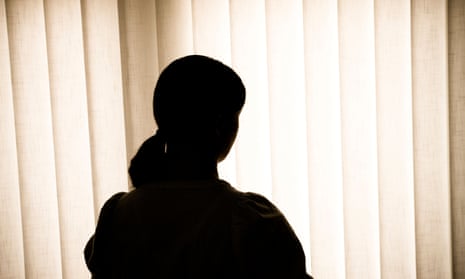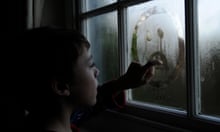This month’s GCSEs are stressful for all year 11 students, but for some they are an almost insurmountable hurdle. One girl in my school, Lily, has the ability to do very well in her exams but her life is a mental health nightmare. We have done our best to help, but we know it is not enough.
Lily is a bright student but this year her attendance has been down to about 50%. She is one of a growing number of children in my school with mental health problems. About 10% have severe issues, and up to 30-40% have a problem that affects their life but may not seem severe or evident to others. With services being cut or neglected, schools can become the only help left.
According to Lily’s mother, her dad wasn’t interested in the child until he figured out that he enjoyed hurting her – emotionally and physically. When the incidents increased, her mother contemplated suicide.
Eventually her mother fled with Lily to a “safe house”, a refuge run by a women’s charity. They spent the next few years on the move. Lily’s father would discover their location and the cycle would start again, despite a restraining order that was meant to prevent him from coming anywhere close to them.
When Lily was nine she was kidnapped by her father and kept locked in his bedroom while he spent time with women. When Lily cried, he beat her severely. When the police found her, she had several fractures and many bruises. By this time, Lily was almost completely mute and would not leave her mother’s side. Even now, she suffers constant pain and she still insists on her mum meeting her after school.
While her father was in prison a voluntary worker came into Lily’s life, who found her and her mother a flat, a new school (ours) and a counsellor. Legal arrangements were put in place to protect them, including a change of names.
The father was released from prison last year, and Lily hasn’t been in school much since. She wants to stay with her mum – feeling safe, keeping mum safe. She is certain her dad is looking for her. She’s afraid he’ll sit outside each school in the area until he finds her. She is afraid one of her friends will take a photo of her and post it on Facebook and her dad will see it or that she’ll just bump into him somewhere.
When did we learn about Lily’s history? Not straight away, it wasn’t passed on by her primary school, nor by her mum. Because Lily is very bright, she enjoyed channelling her energies into school work. She was the model student. It wasn’t until the summer term of year 7, when the PE kit changed from tracksuits to shorts, that her name was passed on as a potential child protection case. She was refusing to wear shorts as she didn’t want anyone to see her legs. An informal approach to social services told us she was flagged and it was then, once we invited her mother in to see us, that the truth came out.
There are other vulnerable children whom we care for who manage to breeze through their GCSEs and move on successfully. Things have been more difficult for Lily. She agreed to meet teachers in the cafe of a local supermarket to complete her controlled assessments. All the time, she kept an eye on the door for fear of her father walking in; I’m not sure we can use that as an extenuating circumstance for the examinations board.
In the run-up to exams I asked her mother if there was anything else I could do to support Lily. There wasn’t. She keeps thanking me for the extra work her teachers have emailed home, and for the visits from Lily’s head of year to make sure everything is all right.
Lily’s mum is very like a lot of the women in our community. She is fiercely private and does not accept help easily. She believes that she is doing the best for Lily by keeping her past a secret because this gives her normality. But it doesn’t, because Lily spent years suffering in silence. This doesn’t help her healing.
We have supported all the referrals to child and adolescent mental health services (Camhs), though Lily doesn’t like any of the people she meets and feels patronised. She doesn’t like to think of herself as having a mental health problem; she would rather “sort” things herself.
We provided access to our in-house counsellor, but when Lily’s attendance dropped, we had to offer her place to someone else – we couldn’t waste the money on an unfilled chair when so many other children also need it.
We are all rooting so hard for Lily. Her teachers adore her, are bending over backwards for her, but are worried that if she now doesn’t perform in the GCSEs it will reflect on them, regardless of what I say. That’s how high-stakes it can feel, even if the head is saying don’t worry, the teachers do worry.
There is nothing I can do for Lily besides encourage her to come in to school, take her exams and see if they can help her on to the next stage. We agreed that one of the teachers would drop Lily home after late revision sessions, just to ease her nerves. We have to get her here for all the papers. So far, it’s going OK.
I was reflecting on Lily’s predicament not long ago with a colleague from another school; he asked me why I hadn’t talked her mother into home-educating her so that Lily wouldn’t show up in the all-important attendance and results data. This is abhorrent: to some school leaders, vulnerable children are just something that get in the way of “good data”.
With more and more children struggling with their mental health and with less and less money to provide support for them, I can see an awful lot more children like Lily being home-educated or being sent to unsuitable alternative provision.
Some schools do not want these children. They are not interested in the underlying causes of their poor behaviour whether it is trauma, mental health or learning needs. These children are expensive – staff time, patience, agency involvement, less academic progress and often lower attendance.
There has to be a way to support schools in keeping such children, and turning them into “good data”, because there seem to be fewer school leaders who actually act on their moral purpose.
Some details have been changed to protect identities
In the UK, Samaritans can be contacted on 116 123. In the US, the National Suicide Prevention Hotline is 1-800-273-8255. In Australia, the crisis support service Lifeline is on 13 11 14. Hotlines in other countries can be found here










Comments (…)
Sign in or create your Guardian account to join the discussion